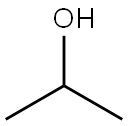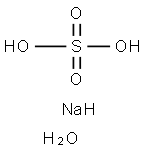DL-METHIONINE METHYLSULFONIUM CHLORIDE
- CAS NO.:1115-84-0
- Empirical Formula: C6H14ClNO2S
- Molecular Weight: 199.7
- MDL number: MFCD00067196
- EINECS: 214-231-1
- SAFETY DATA SHEET (SDS)
- Update Date: 2023-10-25 17:25:43

What is DL-METHIONINE METHYLSULFONIUM CHLORIDE?
Chemical properties
Naturally occurs as the L-form in a variety of vegetables. Although used in food as a flavoring ingredient in fish products, it has also been used therapeutically in the treatment of peptic ulcers, colitis and gastritis.
Originator
Cabagin-U,Kowa
Occurrence
Reported found in asparagus, cabbage, cabbage juice, celery, sweet corn, milk, potato, tea, green tea and tomato.
The Uses of DL-METHIONINE METHYLSULFONIUM CHLORIDE
A derivative of L-Methionine (M260440). Naturally occurring sulfonium compound found in a large number of plants. Identification of antiulcer vitamin in cabbage leaves. Antiulcerative.
Definition
ChEBI: Methylmethionine sulfonium salt is an organic molecular entity.
What are the applications of Application
Methiosulfonium chloride is used for its protective effect on the liver and gastrointestinal mucosa, whereas the iodide finds use for rheumatic disorders.
Manufacturing Process
298 g dl-methionine, 2000 ml water and 151.1 methyl chloride were put into autoclave (volume 3 L) made from V4-a steel. The mixture was heated at temperature 50°-55°C for 8 hours and pressure 12-13 atmospheres.
On cooling an excess of methyl chloride was evaporated, the slightly yellow residue was mixed with 0.2% activated coal and filtered. Water was evaporated in vacuum at 45°-55°C. 2 L methanol was poured into an almost colorless syrup obtained, cooled to -5°-(-10°)C. The methylmethioninesulfonium chloride crystallized.
It was filtered off to give 340 g (85.3%) of desired product 99.5 % purity (data of thin-layer chromatography).
Therapeutic Function
Hepatoprotectant
Taste threshold values
Taste characteristics at 5 ppm: sulfureous creamy, tomato, malty, vegetable like
Trade name
Chloride: Ardesyl (Beytout, France), withdrawn from the market; Cabagin (Kowa, Japan). Iodide: Lobarthrose (Opodex, France), withdrawn from the market.
Purification Methods
Likely impurities are methionine, methionine sulfoxide and methionine sulfone. Crystallise Vitamin U from water by adding a large excess of EtOH. It is hygroscopic. It should be stored in a cool, dry place and protected from light. It has also been purified on a column of Dowex 50 H+ form, washed with H2O and eluted with 6N ammonia, lyophilised, the residue is dissolved in dilute HCl, lyophilised again and then it is obtained as colourless prisms by vapour diffusion of Et2O in a 1:1 (v/v) mixture of MeOH/EtOH in which the hydrochloride is dissolved [Del Re Acta Cryst B 33 3289 1977]. The iodide salt, m ~ 150o(dec), is obtained by dissolving it in 50% aqueous EtOH and adding ~3.5 volumes of absolute EtOH. The bromide salt has m 140o(dec) [Toennies & Kolb J Amer Chem Soc 67 849 1945].
Properties of DL-METHIONINE METHYLSULFONIUM CHLORIDE
| Melting point: | 134 °C (decomp) |
| FEMA | 3445 | DL-(3-AMINO-3-CARBOXYPROPYL)DIMETHYLSULFONIUM CHLORIDE |
| storage temp. | Hygroscopic, Refrigerator, Under inert atmosphere |
| solubility | Water (Soluble), Methanol (Slightly) |
| form | Solid |
| color | White to Off-White |
| Odor | at 100.00 %. malty tomato potato sulfury green |
| JECFA Number | 1427 |
| Stability: | Hygroscopic |
| CAS DataBase Reference | 1115-84-0(CAS DataBase Reference) |
Safety information for DL-METHIONINE METHYLSULFONIUM CHLORIDE
Computed Descriptors for DL-METHIONINE METHYLSULFONIUM CHLORIDE
New Products
4-AMINO-TETRAHYDRO-PYRAN-4-CARBOXYLIC ACID HCL 4-(Dimethylamino)tetrahydro-2H-pyran-4-carbonitrile 4-Aminotetrahydropyran-4-carbonitrile Hydrochloride (R)-3-Aminobutanenitrile Hydrochloride 3-((Dimethylamino)methyl)-5-methylhexan-2-one oxalate 1,4-Dioxa-8-azaspiro[4.5]decane 5-Bromo-2-nitropyridine Nimesulide BP Aceclofenac IP/BP/EP Diclofenac Sodium IP/BP/EP/USP Mefenamic Acid IP/BP/EP/USP Ornidazole IP Diclofenac Potassium THOMAIND PAPER PH 2.0 TO 4.5 1 BOX BUFFER CAPSULE PH 9.2 - 10 CAP SODIUM CHLORIDE 0.1N CVS ALLOXAN MONOHYDRATE 98% PLATINUM 0.5% ON 3 MM ALUMINA PELLETS (TYPE 73) LITHIUM AAS SOLUTION 2-Bromo-1-(bromomethyl)-3-chloro-5-nitrobenzene 2-Bromo-3-nitroaniline N-(3-Hydroxypropyl)-N-methylacetamide 3-Bromo-6-chloropyridazine 4-ethyl-3-nitrobenzoic acidRelated products of tetrahydrofuran








You may like
-
 1-Methyl-6-oxo-1,6-dihydropyridazine-3-carbonitrile 98%View Details
1-Methyl-6-oxo-1,6-dihydropyridazine-3-carbonitrile 98%View Details
99903-60-3 -
 88491-46-7 98%View Details
88491-46-7 98%View Details
88491-46-7 -
 1823368-42-8 98%View Details
1823368-42-8 98%View Details
1823368-42-8 -
 2-(3-(tert-butyl)phenoxy)-2-methylpropanoic acid 1307449-08-6 98%View Details
2-(3-(tert-butyl)phenoxy)-2-methylpropanoic acid 1307449-08-6 98%View Details
1307449-08-6 -
 Ethyl 3-(furan-2-yl)-3-hydroxypropanoate 25408-95-1 98%View Details
Ethyl 3-(furan-2-yl)-3-hydroxypropanoate 25408-95-1 98%View Details
25408-95-1 -
 2-Chloro-5-fluoro-1-methoxy-3-methylbenzene 98%View Details
2-Chloro-5-fluoro-1-methoxy-3-methylbenzene 98%View Details
1805639-70-6 -
 1784294-80-9 98%View Details
1784294-80-9 98%View Details
1784294-80-9 -
 Lithium ClavulanateView Details
Lithium ClavulanateView Details
61177-44-4